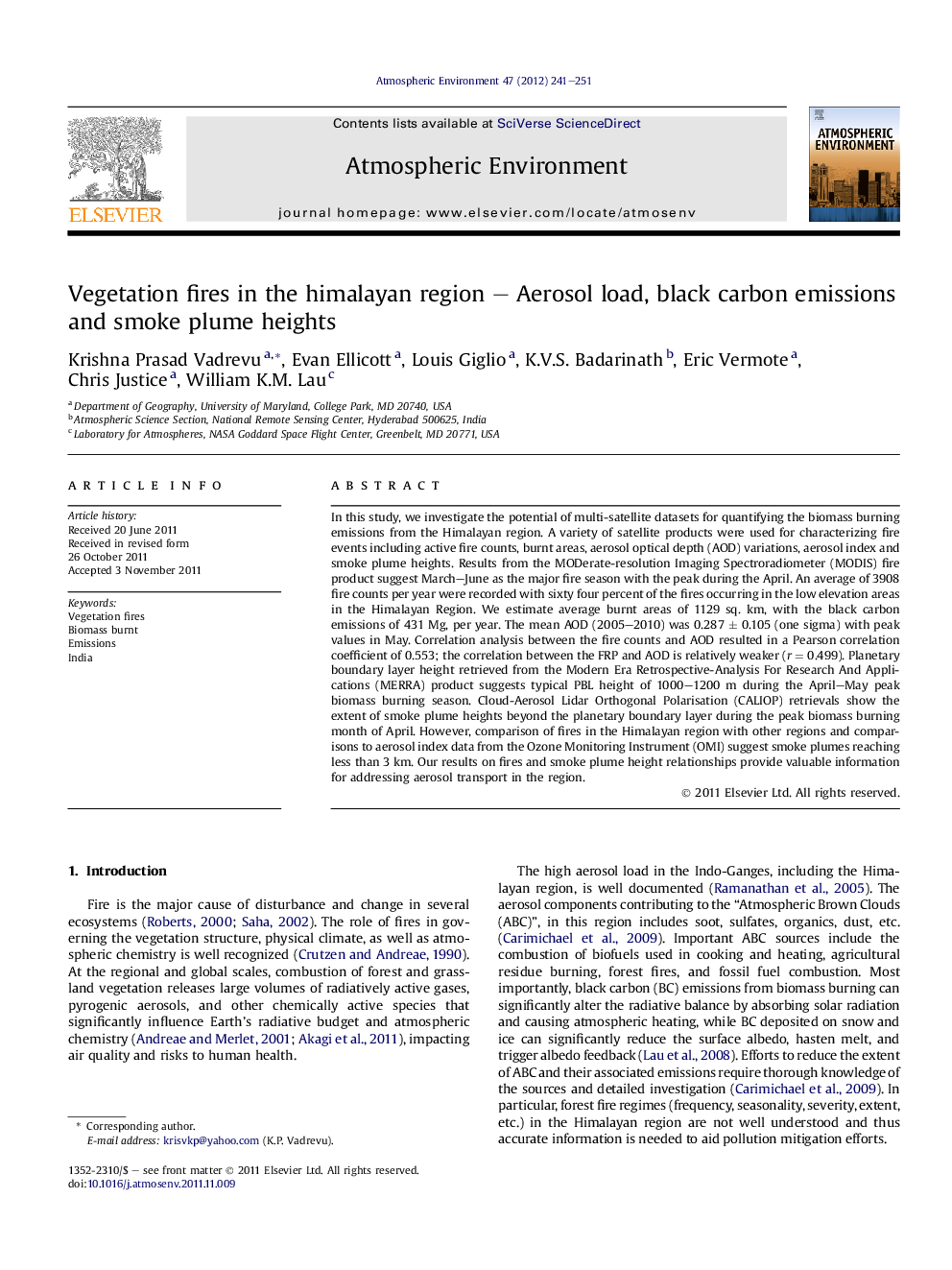| کد مقاله | کد نشریه | سال انتشار | مقاله انگلیسی | نسخه تمام متن |
|---|---|---|---|---|
| 4439011 | 1620424 | 2012 | 11 صفحه PDF | دانلود رایگان |

In this study, we investigate the potential of multi-satellite datasets for quantifying the biomass burning emissions from the Himalayan region. A variety of satellite products were used for characterizing fire events including active fire counts, burnt areas, aerosol optical depth (AOD) variations, aerosol index and smoke plume heights. Results from the MODerate-resolution Imaging Spectroradiometer (MODIS) fire product suggest March–June as the major fire season with the peak during the April. An average of 3908 fire counts per year were recorded with sixty four percent of the fires occurring in the low elevation areas in the Himalayan Region. We estimate average burnt areas of 1129 sq. km, with the black carbon emissions of 431 Mg, per year. The mean AOD (2005–2010) was 0.287 ± 0.105 (one sigma) with peak values in May. Correlation analysis between the fire counts and AOD resulted in a Pearson correlation coefficient of 0.553; the correlation between the FRP and AOD is relatively weaker (r = 0.499). Planetary boundary layer height retrieved from the Modern Era Retrospective-Analysis For Research And Applications (MERRA) product suggests typical PBL height of 1000–1200 m during the April–May peak biomass burning season. Cloud-Aerosol Lidar Orthogonal Polarisation (CALIOP) retrievals show the extent of smoke plume heights beyond the planetary boundary layer during the peak biomass burning month of April. However, comparison of fires in the Himalayan region with other regions and comparisons to aerosol index data from the Ozone Monitoring Instrument (OMI) suggest smoke plumes reaching less than 3 km. Our results on fires and smoke plume height relationships provide valuable information for addressing aerosol transport in the region.
► MODIS data was useful in characterizing the number of fire events, seasonality, burnt areas as well as intensity.
► Fire events resulted in increased aerosol optical depth, with peak during May.
► Fire counts correlated well with AOD.
► Satellite data revealed smoke plume heights reaching beyond 5-km in the Himalayan region.
Journal: Atmospheric Environment - Volume 47, February 2012, Pages 241–251